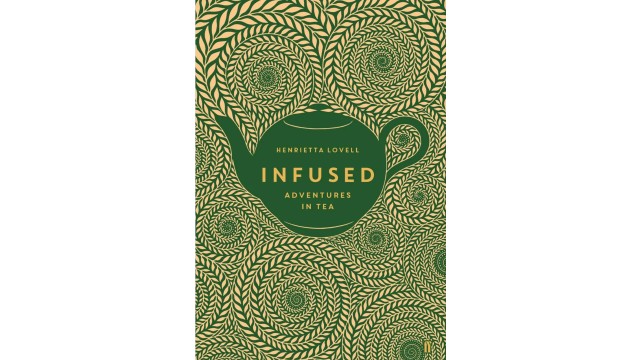Tea and Wellbeing Rituals

When I visited China in 2012, we were taken to a teahouse in Beijing. Of course, we were all aware that this was a showroom for tourists interested in buying Chinese tea. But the gracious 20-minute introduction to the types of tea and how to brew and drink them was almost akin to a tea ceremony held in China for weddings and special occasions.
Although I made my own black tea at home by steeping leaves in hot water, I realized that one of the many nuances of brewing a perfect cup of green tea was the correct temperature of the water, specific to each variety.
Harmony in a Teahouse
We were introduced to Longjing, also known as Dragon Well, popular for its vibrant green shade and fresh taste. There was the light Yun Wu (grown in high altitudes and mellowed by mist), Gunpowder or Zhu Cha (processed into curled pellets like CTC or Cut, Tear, and Curl); and finally, there was the treasured En Shi Yu Lu or Jade Dew tea, the queen of Chinese green teas. And all this was from the single plant — Camellia sinensis! It was just the different climate, terrain, and curing methods that lent the specific character to each variety.
We silently sat sipping each individual brew from delicate porcelain cups (without handles or saucers) that would hardly hold 100 ml or 2/5 cup of tea. The seating was low, woven bamboo mats covering the floor. Pretty scrolls with floral motifs and calligraphy decorated the walls. Glass showcases displayed aesthetic tea sets, teapots, and other tea-making paraphernalia, which we could buy or just gaze at longingly.
Our hostess heated the water to the correct temperature for each leaf type, steeped it between 3 to 5 minutes according to the ideal time, and gently described the qualities before filling up little cups arranged on a tray and passing it to us. We also learned the superior quality leaves could be re-used by pouring hot water over them several times, and small cups of this delicate drink were sipped throughout the day. I left the teahouse mesmerized, clutching my purchase of an exquisite blue and white mini-teapot with a dragon motif and a packet of jasmine-scented Longjing.
Soothing Tea Cultures
The Chinese can never imagine “corrupting” their tea with sugar, honey, or milk. For centuries (dating as far back as the third century) they have been drinking green tea, both for medicinal and social purposes. The method of manufacture, which remained a closely guarded secret right until the British stole it in the 19th century, has remained largely the same. The tea leaves (very broadly divided on whether they grow in the sun or shade, and further divided into many varieties) are plucked and roasted immediately to preserve the “green” quality, making it rich in antioxidants and polyphenols.
Some black teas known as Oolong and Lapsang Souchong, are also drunk in China. Black tea is simply made of the same leaf (Camellia sinensis), but it is oxidized or fermented, and then processed, lending it the dark color and stronger taste. Research on Chinese tea drinking patterns have shown that bioactive compounds in tea offer antioxidant and anti-inflammatory benefits.
Another country with a strong green tea culture is Japan, where the leaf was introduced as early as the eighth century by Buddhist monks travelling to China and back. Over the centuries, Japan developed its own tea-drinking culture, including an elaborate etiquette associated with the tea ceremony.
In Japan green tea is broadly classified as sencha (whole leaf that is steeped in hot water and strained) and matcha (powdered leaf that is stirred into the hot water and consumed). Note the ‘cha’ suffix – the common word for tea in almost all Asian countries.
I first had matcha in delicious ice cream, and the soothing green color and subtle flavor made a deep impression on my mind. All over the world gourmet chefs now experiment with matcha in a variety of foods that have wellness embedded in them along with flavor.
The Goodness of Green Tea
In the past two decades there has been a growing awareness about the benefits of green tea in India. However, aggressive advertising has created some misconceptions, mainly that it’s a miracle weight-loss ingredient. Many Indians drink green tea without savoring the pristine flavors. It is almost always had in tea bag form and over-steeped in boiling water, releasing bitter tannins, and killing the aroma.
It would be good if tea brands added tips on how to steep a perfect cup of green tea on the packaging. It’s not as if tea bags are always inferior in quality. I was in tea heaven sipping the different tea bags offered by my hotel in Vietnam, another country that savors its tea.
Of late Indian companies are also providing excellent options in flavored green tea bags, such as tulsi (holy basil), mint, and lemon. Of course, the age-old flavored green tea that has come to stand in a class of its own, is the refreshing and aromatic jasmine tea. To many, green tea is an alternative to sugary, milky chai that is harmful if drunk in large quantities. Those suffering from diabetes, obesity, hypertension, and digestive problems, but can’t kick the hourly cuppa, are urged by doctors to develop healthy habits, and adopt this cup full of goodness.
Key Takeaways
- Asian teas offer a variety of benefits.
- Tea has therapeutic effects.
- Green tea is rich in antioxidants.




